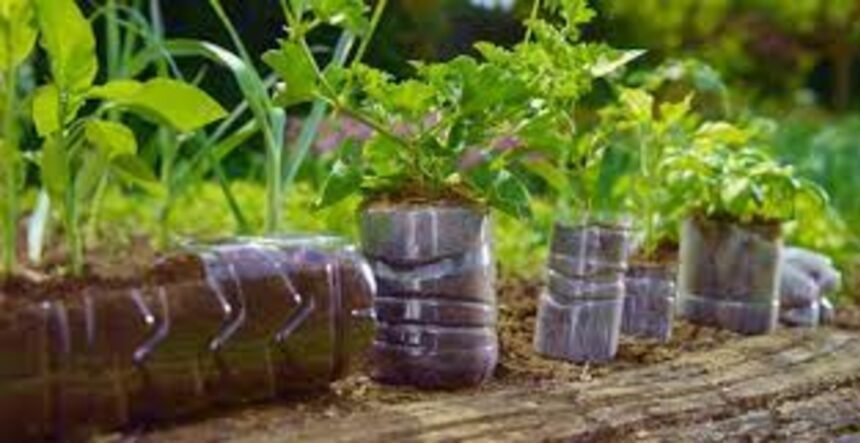Introduction:
The monsoon season brings with it a unique opportunity to harness the power of plastic waste and turn it into something positive for the environment. By employing creative DIY ideas, you can repurpose plastic items to enhance your home’s greenery while reducing the harmful impact on our planet. In this feature article, we explore some innovative ways to use plastic during the monsoon season for sustainable plantations.

1. Rain Boot Planters:
Old rain boots often find themselves discarded after a few seasons. Instead of letting them contribute to landfill waste, why not give them a new lease on life as charming planters? Fill them with soil and plant small herbs, flowers, or even succulents. These rainboot planters can add a touch of whimsy to your garden, balcony, or doorstep.
2. Plastic Bottle Vertical Gardens:
Plastic bottles are one of the most common pollutants, but they can be transformed into vertical gardens that maximize space. Cut plastic bottles in half, invert the upper part, and use the bottom as a pot. Attach these pots to a wall or fence, creating a stunning vertical garden. This innovative approach not only conserves space but also reduces plastic waste.
3. Hanging Plastic Planter Baskets:
Don’t throw away those plastic baskets or containers that once held fruits or vegetables. With a bit of creativity, they can become hanging planters. Drill holes in the bottom for drainage, line them with coconut coir or burlap and hang them from sturdy hooks. Fill them with colourful flowers, ferns, or even small trailing vines for an eye-catching display.
4. Plastic Bag Mulching:
Rather than disposing of plastic bags, repurpose them as mulch. Cut the bags into strips and spread them around the base of your plants. This simple technique can help retain soil moisture, prevent weed growth, and protect the soil during heavy rains. Plastic bag mulching is a low-cost and effective way to improve plant health.
5. Plastic Tub Seedling Nursery:
Like those used for yoghurt or ice cream, plastic tubs can be turned into makeshift seedling nurseries. With proper drainage holes, these tubs provide a controlled environment for germinating seeds during the monsoon season. Once the seedlings are ready to be transplanted, you can easily move them to larger pots or your garden.
6. Plastic Lid Markers:
Plastic lids from containers like yoghurt cups or takeout boxes can serve as plant markers. Write the names of your plants on these lids using a waterproof marker, and insert them into the soil next to each plant. This not only helps you keep track of your garden but also reduces the need for disposable plastic markers.
Conclusion:
The monsoon season need not be a time of waste and environmental degradation. By employing these eco-friendly DIY ideas to repurpose plastic items, you can contribute to a greener and more sustainable world. These initiatives not only add beauty to your surroundings but also inspire others to find innovative ways to use plastic for the betterment of our planet. Embrace the rainy season as an opportunity for positive change and creativity in your home plantation endeavours.






